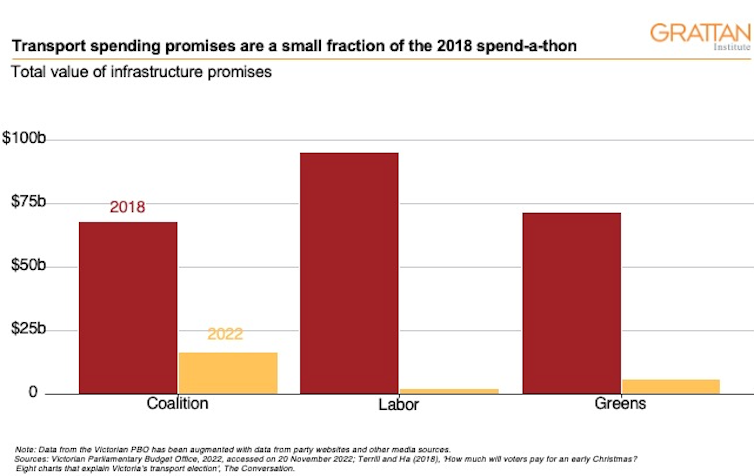Transport election promises are much smaller this time round in Victoria, but the quality control is no better
- Written by Marion Terrill, Transport and Cities Program Director, Grattan Institute

An election campaign can sometimes feel like Groundhog Day, but this Victorian election is genuinely different. While the major parties are still making plenty of transport promises, they’ve dialled them way down from the dizzy heights of 2018[1].
Our hope for the next election? Stop promising projects on the hoof, and start listening to what Infrastructure Victoria and Infrastructure Australia assess as worthwhile.
The biggest difference between the transport promises made this campaign compared to last time is scale. Back in 2018[2], the Coalition promised to spend $68 billion and Labor an eye-watering $95 billion, of which about half was for the Suburban Rail Loop[3]. This time around, we calculate the Coalition’s promised new spending is just 25% of last time’s, at $16.7 billion, and Labor’s a tiny 2%, at $2.3 billion.















